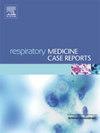Community-acquired pneumonia caused by Kluyvera intermedia: A rare case report
IF 0.8
Q4 RESPIRATORY SYSTEM
引用次数: 0
Abstract
Background
Kluyvera intermedia is a rare Gram-negative bacillus that predominantly functions as an opportunistic pathogen. Commonly found in environmental sources such as freshwater and soil, it has been infrequently reported in human infections, often leading to underrecognition in clinical practice. Because it can resemble more prevalent pathogens, accurate identification is crucial for effective management of infections.
Case report
We report a case of pneumonia caused by Kluyvera intermedia in a 55-year-old male with a 10-year history of well-controlled hypertension. The patient initially presented with classic pneumonia symptoms, including fever, cough, and right-sided chest pain. Although he received empirical treatment with Cefotaxime Sodium and Levofloxacin at the local hospital, follow-up CT scans revealed further enlargement of the pulmonary lesions. To investigate the underlying etiology, the patient underwent MRI-guided lung biopsy at our hospital, and culture of the aspirated fluid identified Kluyvera intermedia as the causative pathogen. He was subsequently treated with Ceftizoxime sodium and Levonidazole Sodium Chloride Injection, resulting in significant clinical improvement. The patient was discharged after 22 days of hospitalization.
Conclusion
Further accumulation and reporting of cases will enhance the recognition of the clinical characteristics of Kluyvera intermedia. These studies will not only expand our understanding of this rare pathogen but also provide a foundation for improved response strategies, thereby ensuring better management of similar infections in future clinical practice.
求助全文
约1分钟内获得全文
求助全文
来源期刊

Respiratory Medicine Case Reports
RESPIRATORY SYSTEM-
CiteScore
2.10
自引率
0.00%
发文量
213
审稿时长
87 days
 求助内容:
求助内容: 应助结果提醒方式:
应助结果提醒方式:


